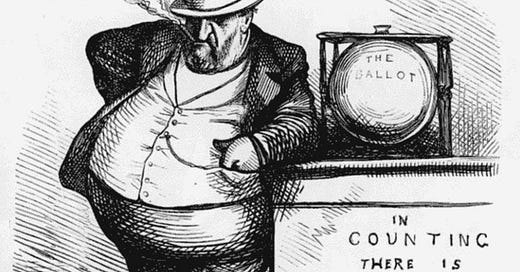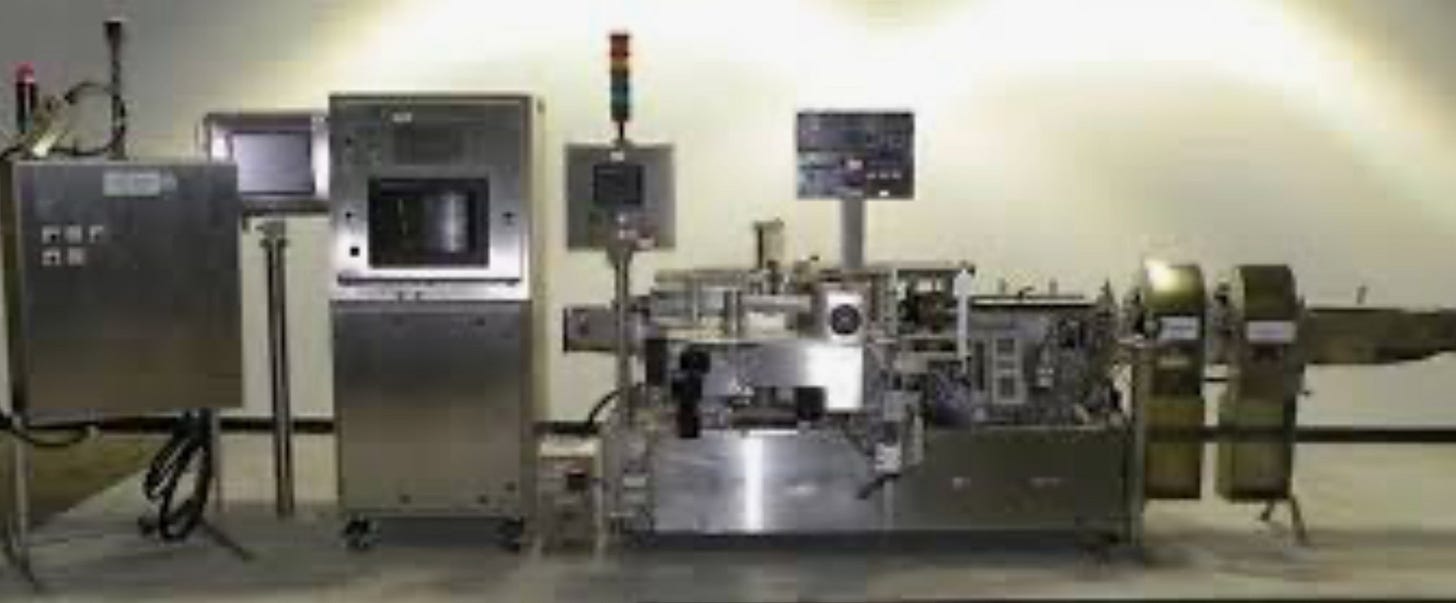This is the first of two articles in The New Jersey Democrat about the persistent power of machine politics in New Jersey. Later this week, we’ll take a look at incumbents and challengers in state assembly races.
When voters cast their ballots in the June 10 primary election, it’ll be the first time that ballots for the governor’s race and state assembly won’t be governed by the infamous “county line,” which gave county organizations the ability to stack the deck, giving favored candidates first-place positioning. It’ll be a test of how much New Jersey’s traditional party bosses still have over who gets to run for state offices.
And this year, more than twice as many candidates are contesting assembly seats, challenging incumbents and party-backed candidates, than they did two years ago. That’s one indication that potential candidates see the demise of the line as opening the door to people outside the machine.
But how much has the demise of the line actually undercut boss-driven politics in New Jersey, limiting the power of county Democratic party chairmen?
“There is an expectation that their power is diminished and we see that in the fact that so many of the gubernatorial candidates chose not to seek their endorsement,” Professor Julia Sass Rubin, of Rutgers’ Bloustein School of Planning and Public Policy, told The New Jersey Democrat. “And that was unheard of previously, because not to be endorsed meant you had no chance at all. And what will ultimately prove how powerful they are is if we have candidates in the Democratic primary, who did not receive any endorsements, outperform what we would historically expect from someone without the line.”
Rubin’s extensive research and writing on the impact of the line was instrumental in Sen. Andy Kim’s successful court challenge to it in 2024. In her expert court testimony cited by both the district court and the appellate court in striking down the line, Rubin concluded that in nearly all of the primaries in New Jersey over a ten-year period, candidates benefited significantly when they were on the county line.
Rubin says the election will give us more insight into the power of the county chairmen, but she believes they still have significant control. “To think they are powerless is premature because they still have financial resources and they still have organizing ability,” she said. “And perhaps more importantly, the fact that they have a list of the most frequent voters and are able to email those people and tell them what their vote should be probably has a fair amount of impact.”
In addition, the county chairmen will have more money this election to hand out to candidates and use to oppose others than ever before, according to the NJ Election Law Enforcement Commission (ELEC).
“County parties are in their best financial shape entering a state election year since at least 2009,’’ said Joe Donohue, ELEC’s deputy director. “They have never raised more than $10 million in a federal election year during that period.” Last year both parties together raised more than $13 million, with Democrats heavily outpacing Republicans, raising $9.3 million. After spending money on last year’s election, the Democratic county parties still had on hand $3.7 million for this year’s upcoming primary and general election. County Democratic committees in Bergen, Middlesex, and Passaic each raised more than $1 million last year.
And that fundraising prowess continued into the first three months of 2025, according to the latest data from NJ ELEC, with county committees having their best first quarter fundraising since 2004. Democratic county committees raised $1.85 million from January through March. The county committees with the biggest hauls so far in 2025 were Middlesex ($397,589), Bergen ($332,639), and Hudson ($234,871).
And why has money suddenly poured into county party coffers? “County parties clearly have benefited from a 2023 state law that significantly raised campaign contribution limits for non-gubernatorial fundraising committees,’’ said ELEC’s Joe Donohue.
The ‘New Jersey machine labeler’ by LabX.
Two years ago, the law doubled the maximum contribution allowed to a county committee from $37,500 to $75,000, the first increase in almost twenty years. Additionally, the law provided for “housekeeping” accounts that enabled donors to give money to county committees for rent, legal bills and other expenses. The two together, plus an inflation adjustment, means this year donors can contribute up to $118,500 to county committees. And as TNJD reported earlier this year, that law change opened the floodgates for special interest money. In Essex County, contractors and their allies in the building trades unions and law firms contributed half the total raised by the Democratic county committee in 2024.
In addition to money, county chairmen still have a network of local party district leaders that can be mobilized for door knocking and phone banking in support of endorsed candidates.
And, in a new wrinkle, the county chairmen in future will greatly influence, if not control, who becomes one of the 100-plus members of the New Jersey Democratic State Committee. In fact, the law that eliminated the line did away with election to the state committee by all Democratic voters as part of a gubernatorial primary. Now the state committee will be elected by county district leaders. Said the new law, approved on March 6, 2025:
The members of the State committee of each of the political parties shall not be elected at the primary election for the general election. The members shall be elected by the members of the county committee of the respective political parties, at a time and in a manner to be determined by each respective political party, and in accordance with the constitution and bylaws of such party.
“I am not sure why they would go to the trouble of putting that into the legislation unless they were afraid of losing control of the state committee,” said Rubin.
How much doing away with the line impacts the machine’s control of the local party apparatus, the district leaders, remains to be seen. Many of these elected positions have never been widely contested and in many places, especially where the local machines are strong, district leaders are often people employed by the municipality or the county or their friends and relatives.
In Camden County, party boss George Norcross’s base of power, the machine has made it particularly difficult for any outsiders to challenge their candidates for local district leader spots. Camden County Democratic party rules say there must be two district leaders for every 750 registered Democrats in the county. In most counties the district leaders are elected by these district voters. And as long as a district leader only has to win the votes of these people, it’s not too difficult to go door-to-door and campaign.
But in Camden County district leaders need to win the votes of all Democrats registered in their municipality, where there are often thousands, and even tens of thousands of voters. “It should be easy to run a race for me in my district in Collingswood, it’s maybe 100 to 200 doors that I need to connect with,” Kate Delaney, head of South Jersey Progressive Democrats told TNJD. “But needing votes from all the Democrats in Collingswood is a much bigger race.” Delaney, who is running against a machine-endorsed slate, said current rules help the machine keep out challengers like her who are “not necessarily going to be cogs in the Norcross machine.”







We have looked into county backed candidate for Mayor ELEC report. What we saw confirmed our expectations: the machine keeps chugging along.